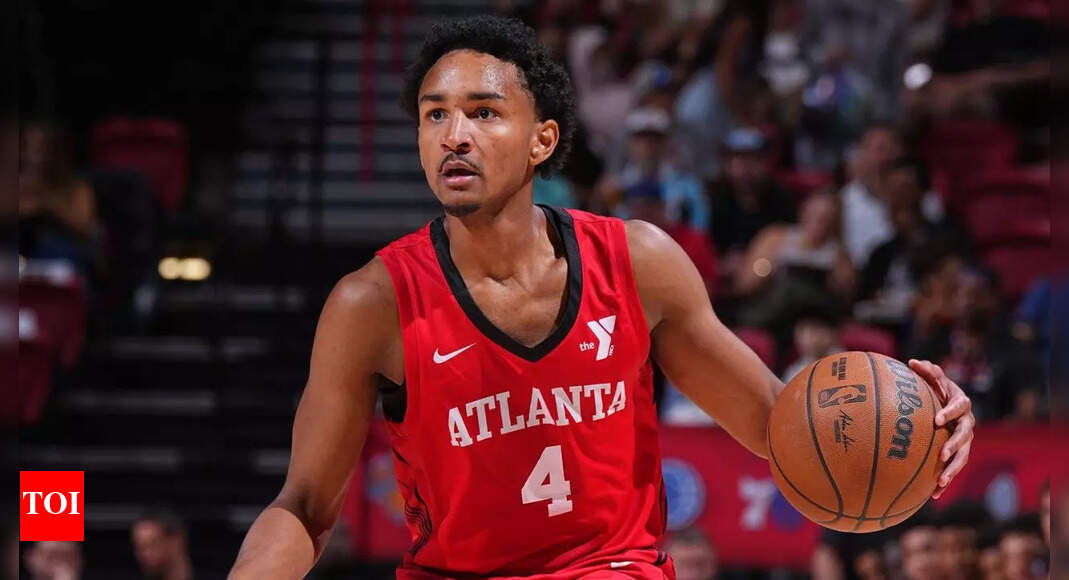The Brooklyn Nets have made another calculated move in their ongoing rebuilding process, acquiring promising young guard Kobe Bufkin from the Atlanta Hawks in exchange for cash considerations. While seemingly minor on the surface, this transaction represents a significant strategic decision that speaks volumes about both franchises’ current directions and future aspirations.
The Deal Details and Immediate Impact
The trade brings the 20-year-old Bufkin, a former first-round selection (15th overall in 2023), to Brooklyn’s increasingly youthful roster. For Atlanta, the move provides immediate financial flexibility while clearing a roster spot for other developmental priorities. The Hawks’ decision to part ways with a recent first-round pick after just one season signals their commitment to a more established core built around Trae Young and their veteran acquisitions.
Bufkin’s arrival in Brooklyn couldn’t come at a more opportune time for the franchise. The Nets are in the midst of a comprehensive rebuild following the departures of their former “Big Three” era stars, and young talent acquisition has become their primary focus. This trade aligns perfectly with their strategy of accumulating promising prospects who can develop alongside their existing young core.
Kobe Bufkin: Untapped Potential Meets Opportunity
College Success and NBA Draft Pedigree
Bufkin’s basketball journey began to gain serious attention during his time at the University of Michigan, where he demonstrated remarkable growth and versatility. As a sophomore, he averaged 14.0 points, 4.5 rebounds, and 2.9 assists per game while shooting an impressive 35.3% from three-point range. His two-way impact and ability to contribute across multiple statistical categories made him an attractive prospect for NBA scouts.
Standing at 6’4″ with a 6’8″ wingspan, Bufkin possesses the physical tools that modern NBA teams covet in their backcourt players. His combination of size, athleticism, and basketball IQ allowed him to play multiple positions at Michigan, a versatility that translates well to today’s position-less NBA landscape.
Rookie Season Challenges and Learning Curve
Bufkin’s inaugural NBA season with Atlanta was marked by limited opportunities and the typical growing pains associated with young players adapting to professional basketball. Appearing in 35 games with minimal playing time, he averaged 2.3 points per game while struggling with shooting efficiency. However, his brief appearances showed flashes of the defensive intensity and court vision that made him a first-round selection.
The limited role in Atlanta’s rotation wasn’t necessarily a reflection of Bufkin’s abilities, but rather the result of a crowded backcourt that included established players like Trae Young, Dejounte Murray, and Bogdan Bogdanović. His developmental needs required more consistent playing time and a clearer path to meaningful minutes.
Brooklyn’s Rebuilding Philosophy in Focus
Youth Movement Strategy
The Nets’ acquisition of Bufkin represents the latest chapter in their comprehensive roster transformation. Following the trades that sent Kevin Durant, Kyrie Irving, and eventually James Harden to other franchises, Brooklyn has committed to building through the draft and acquiring young talent with upside potential.
This approach mirrors successful rebuilds by franchises like the Oklahoma City Thunder and San Antonio Spurs, who have prioritized long-term development over short-term competitiveness. By adding players like Bufkin, the Nets are creating a foundation of young, coachable talent that can grow together and develop chemistry over multiple seasons.
Financial Flexibility and Asset Management
From a financial standpoint, acquiring Bufkin for cash considerations represents excellent value acquisition for Brooklyn. Instead of using draft capital or trading away established players, they’ve added a former first-round pick to their roster while maintaining future flexibility. This type of low-risk, high-reward transaction allows the Nets to take calculated gambles on young talent without compromising their long-term planning.
Atlanta’s Perspective: Clearing the Path Forward
For the Hawks, trading Bufkin reflects their current competitive timeline and roster construction priorities. With a core built around Trae Young’s prime years, Atlanta is focused on acquiring players who can contribute immediately to playoff success rather than long-term developmental projects.
The cash considerations received in the trade, while modest, provide additional resources for future moves and demonstrate the Hawks’ willingness to make difficult decisions about roster composition. This pragmatic approach suggests that Atlanta views their current window of opportunity as requiring more experienced contributors rather than raw talent that needs time to develop.
Implications and Future Outlook
Development Opportunities in Brooklyn
Bufkin’s move to Brooklyn presents him with a significantly clearer path to playing time and development opportunities. The Nets’ current backcourt situation allows for more experimentation with young players, and head coach Jacque Vaughn has shown willingness to prioritize development over wins during this rebuilding phase.
The change of scenery could prove catalytic for Bufkin’s career trajectory. Sometimes young players need a different environment, coaching approach, or role to unlock their potential, and Brooklyn’s current situation provides all of these elements.
Broader NBA Trends
This trade exemplifies a growing trend in the NBA where competing teams are increasingly willing to part with young talent that doesn’t fit their immediate timeline. For rebuilding franchises like Brooklyn, these situations create opportunities to acquire promising players at relatively low costs.
The transaction also highlights the importance of organizational patience and development programs. Teams that can provide young players with proper coaching, playing time, and developmental resources often see better returns on their investments in raw talent.
Key Takeaways
- Strategic Alignment: The trade perfectly aligns with Brooklyn’s youth-focused rebuilding strategy while providing Atlanta with financial flexibility
- Low-Risk Investment: Acquiring a former first-round pick for cash considerations represents excellent value for the Nets
- Development Opportunity: Bufkin gains access to more playing time and a clearer path to growth in Brooklyn’s system
- Timeline Differences: The move illustrates how competing franchises and rebuilding teams operate on different timelines and priorities
- Market Inefficiency: The trade demonstrates opportunities for savvy teams to acquire undervalued young talent from organizations with different objectives
As the NBA season progresses, the success of this trade will ultimately be measured by Bufkin’s development and contribution to Brooklyn’s long-term vision. For a franchise committed to building through youth and patience, adding a talented 20-year-old with first-round pedigree represents exactly the type of calculated risk that can define successful rebuilds.

Born and raised amidst the hustle and bustle of the Big Apple, I’ve witnessed the city’s many exciting phases. When I’m not exploring the city or penning down my thoughts, you can find me sipping on a cup of coffee at my favorite local café, playing chess or planning my next trip. For the last twelve years, I’ve been living in South Williamsburg with my partner Berenike.

